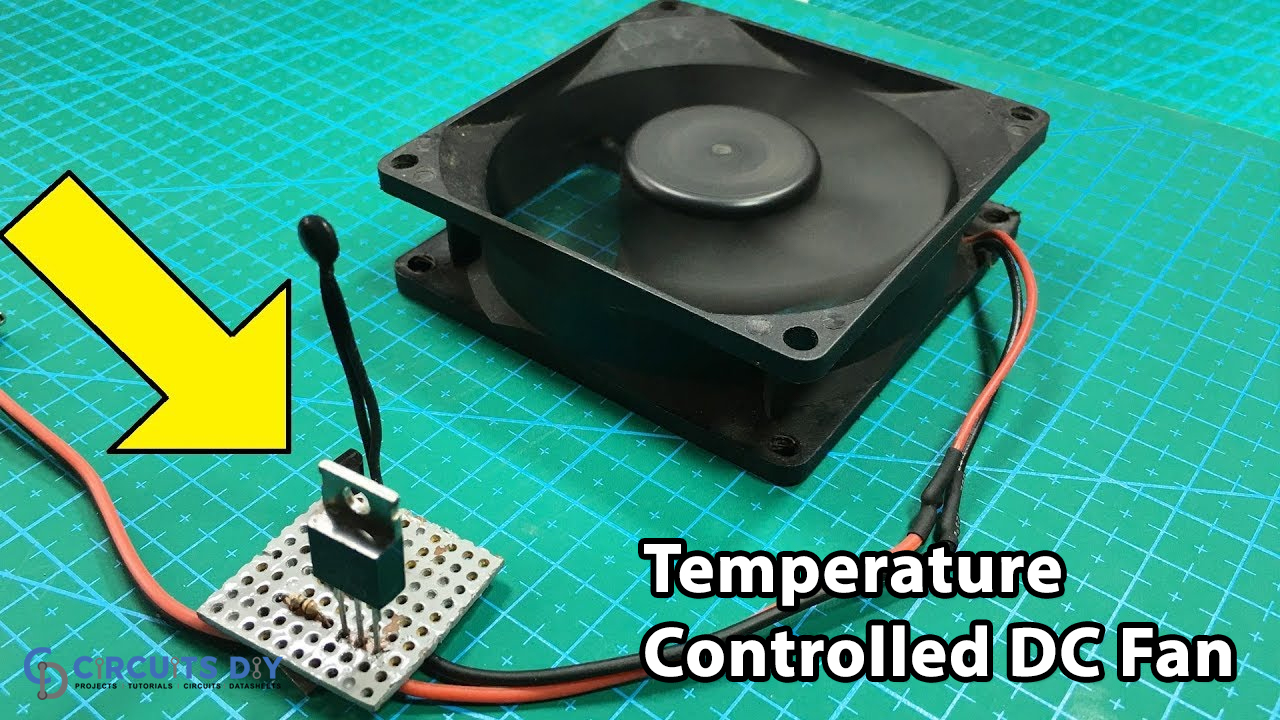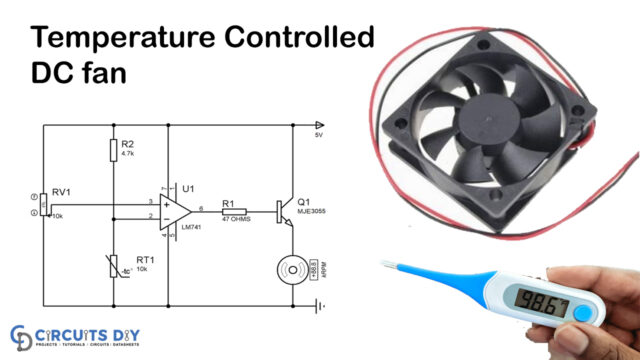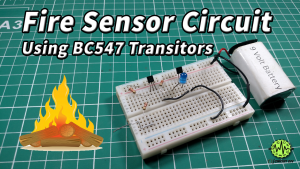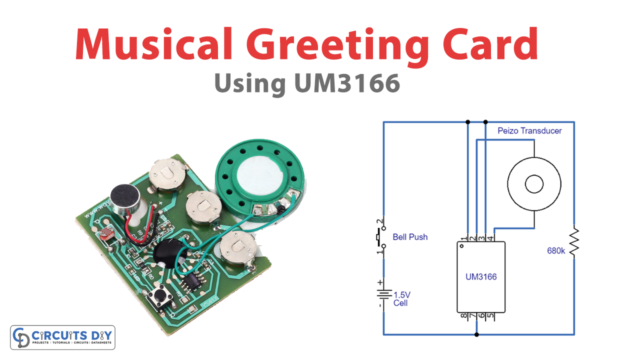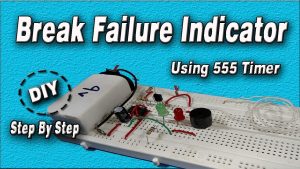Introduction:
Devices that are powered with a direct current source are DC devices. DC fans or direct current fans require a fixed voltage from a battery or any DC source to power up. These fans are generally used in electronic equipment to prevent overheating since electronic devices produce more heat which can damage the circuit. They are advantageous over the ceiling or AC fans in terms of speed controlling, efficiency, and utilize less energy.
Temperature-controlled DC fans are designed to control the temperature of any system by monitoring the temperature continuously using a temperature sensing element. It automatically turns ON or OFF the fan depending on the upper and lower threshold limits. The circuit is easy to design and can be built at home using easily available components. The working of the designed circuit is explained below.
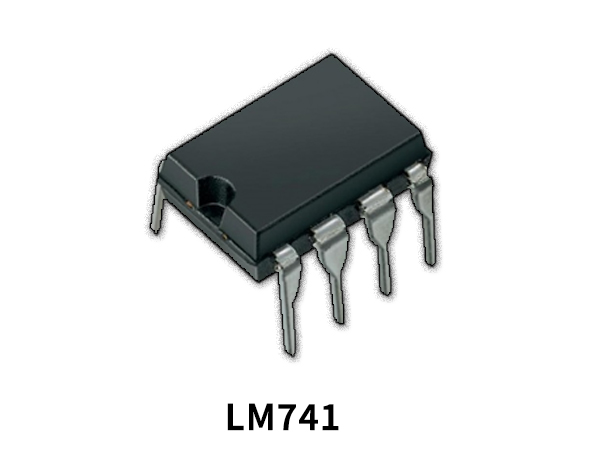
Hardware Components
The following components are required to make Temperature Controlled DC Fan Circuit
| S.no | Component | Value | Qty |
|---|---|---|---|
| 1. | Thermistor | 10KΩ | 1 |
| 2. | Operational Amplifier IC | LM741 | 1 |
| 3. | DC Fan | 9V | 1 |
| 4. | Transistor | BC547 | 1 |
| 5. | Resistors | 4.7KΩ, 39Ω | 1 |
| 6. | Variable Resistor | 10KΩ | 1 |
| 7. | Diode | 1N4007 | 1 |
| 8. | Battery | 9V | 1 |
LM741 Pinout
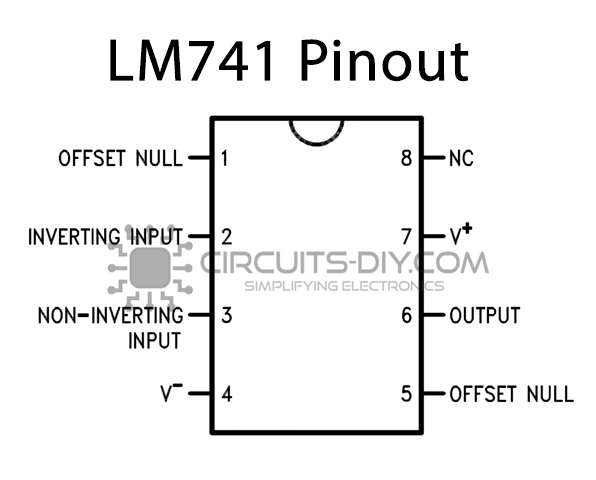
For a detailed description of pinout, dimension features, and specifications download the datasheet of LM741
Temperature Controlled DC Fan Circuit
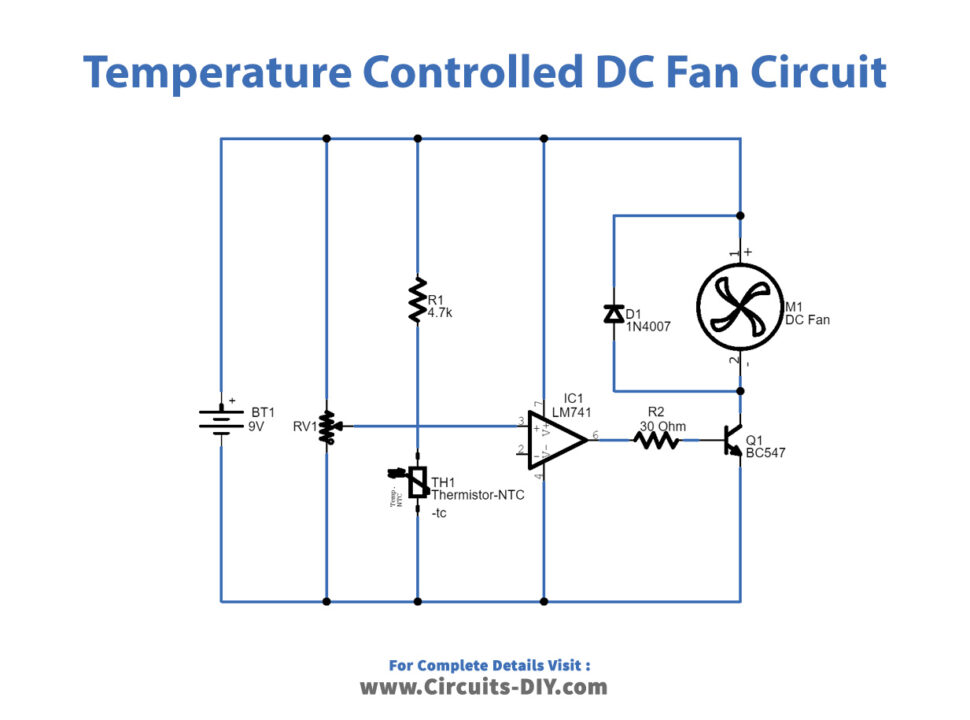
Working Explanation
The NTC thermistor (temperature sensor) is used for monitoring the temperature, a transistor BC547 is used as a switch while an op-amp is used as a feedback element to bias the transistor. A variable resistor of 10K is used to set the threshold level. A 9V DC fan is controlled using all these components. The circuit is powered up using a 9V battery.
A variable resistor is connected across the battery and the non-inverting terminal of the amplifier while the thermistor is coupled across the battery through a resistor and to the inverting terminal of the op-amp. The output terminal of the op-amp is coupled to the base of the transistor using a resistor in between, while the collector terminal (output) of the transistor is connected to the DC fan.
The thermistor continuously monitors the temperature of the system and the threshold is set by the variable resistor, as the temperature increases to a certain level, the op-amp delivers the differential voltage to the base of the transistor which turns ON the transistor and the fan gets the ground supply and hence starts to run. When the temperature decreases below the threshold level, the op-amp gives zero output and disconnects the transistor from the source which turns OFF the DC fan, and the cycle repeats.
Applications:
Temperature-controlled DC fans can be used in the following applications:
- It can be used in residential and commercial places to control the temperature of the room.
- These devices can also be used to control the temperature of electronic components and devices.
- These DC fans are used in CPUs to reduce the heat.


